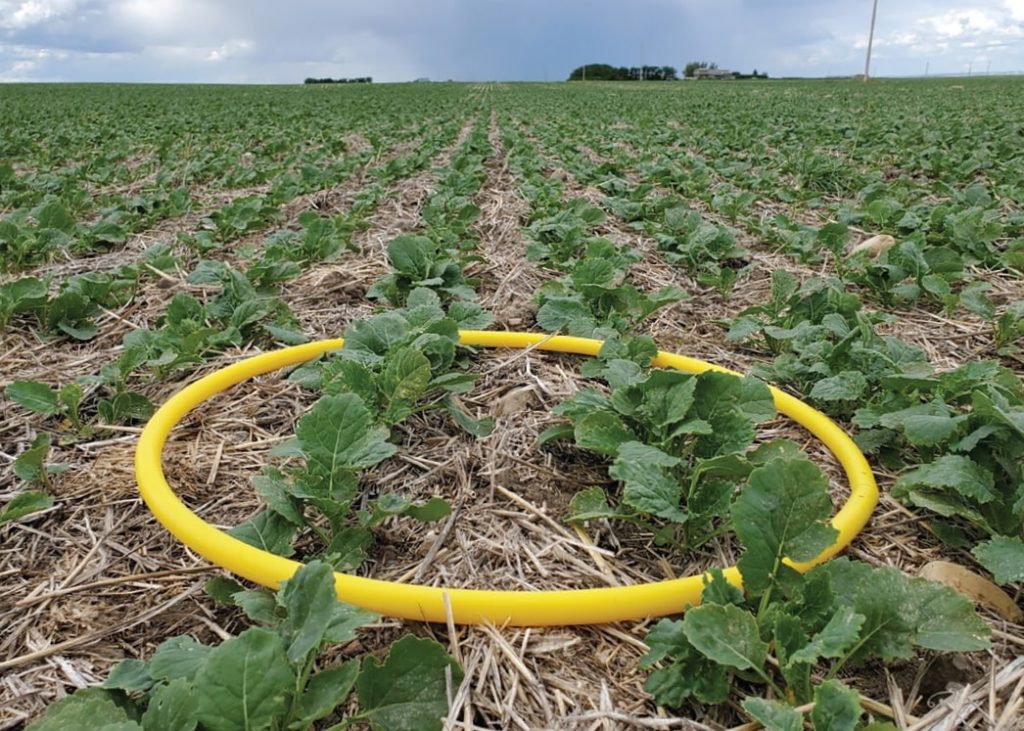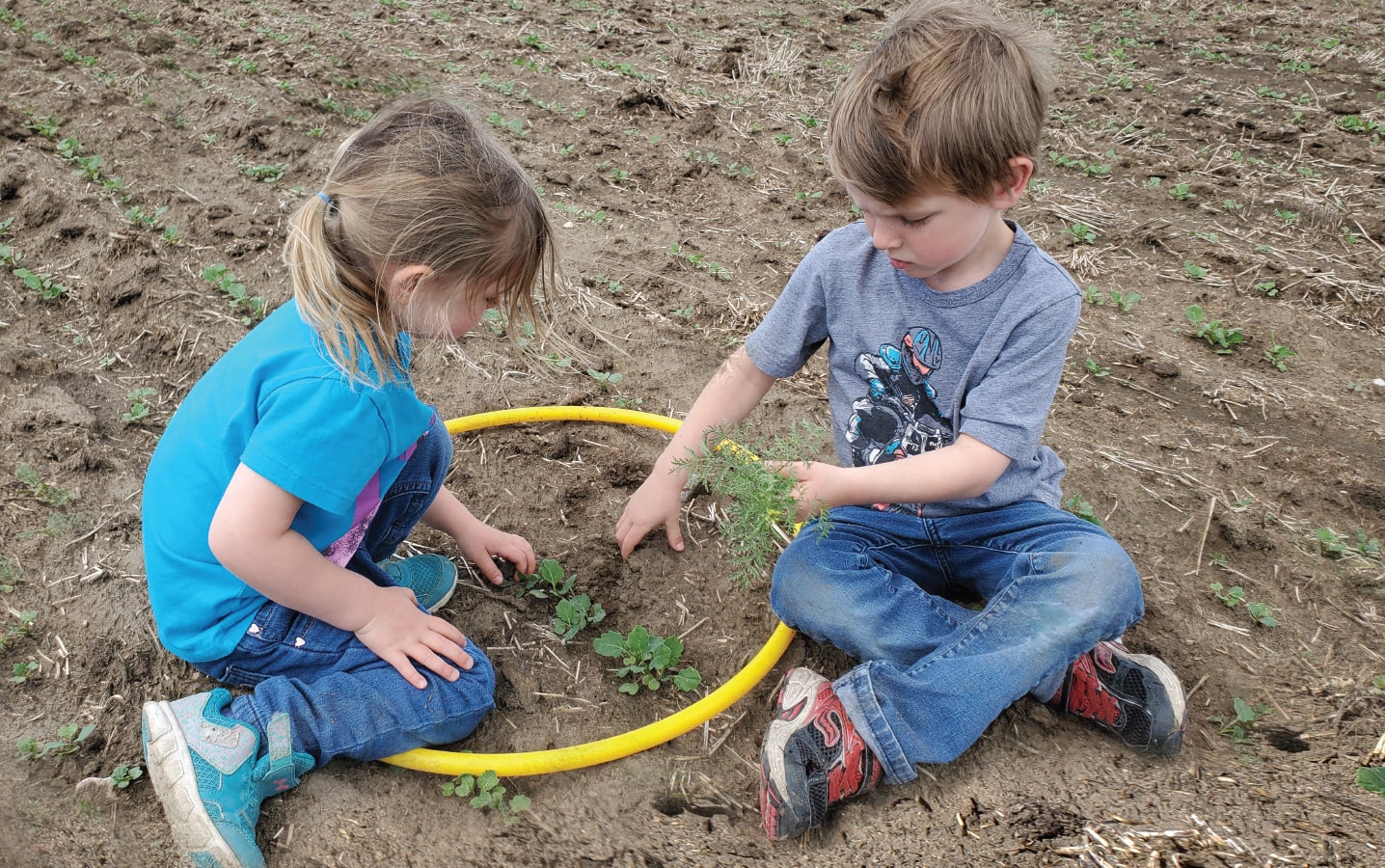Our Agronomy Focus Areas For 2021
Each year, we look for new focus areas that ultimately support grower profitability and productivity while also promoting agronomically sound crop rotations, biodiversity and improvements to soil and water use. By balancing all of these objectives, Canadian canola can maintain its strong, established brand and use these achievements to keep and expand its market share.
Our focus areas for 2021 include selection of the best cultivars for each field, increased adoption of 4R fertilizer management, in-field diagnostics of disease threats, and promotion of new Canola Calculator tools for plant counts and harvest loss measurement.
Use the right cultivar for each field
Increased yield and profit could result when a grower matches seed traits to the unique situations in each field. Here are a few situations:
- Disease resistance should be a primary consideration. Choose the clubroot-resistant (CR) hybrids that perform best in your region. For fields with clubroot in CR hybrids, extend rotations and try a different resistance source the next time canola goes on that field. Choose the blackleg R gene that matches the predominant L. maculans race in the field.
- Pod shatter traits aren’t just for straight cutting. They can help minimize harvest losses and provide flexibility for farmers who might not be able to cut every field at the optimum time.
- Rotate herbicide groups as one way to slow herbicide resistance in weeds.
- Match maturity to your growing zone. If planting date is pushed back, consider an earlier maturing cultivar – if seed is available.
Local data is always best when looking for help with cultivar decisions. Consult results at canolaperformancetrials.ca for the locations closest to you. Look at multiple years of data. Talk to local area agronomists and your neighbours. What worked well for them? What didn’t? Why or why not? Yield is important but return on investment is more important.
Increase 4R adoption
Canada’s canola industry has a goal to utilize 4R Nutrient Stewardship practices on 90 per cent of canola acres by 2025. The current rate, according to the latest Fertilizer Canada survey, is just over 50 per cent.
Remember that 4R is a process and you do not need a specific piece of equipment or software to begin 4R. Give some thought as to right product, right rate, right time and right place for each crop or field and formulate a plan. Then consult a 4R-designated agronomist to gain additional professional advice. Find practical tips at fertilizercanada.ca, canolaencyclopedia.ca and canoladigest.ca.
Better in-field diagnostics of disease threats
We will make a priority in 2021 to help farmers and agronomists differentiate all major plant diseases, including the relatively unfamiliar disease, verticillium stripe. For blackleg, we have a new comprehensive management guide that focuses on stewarding resistance genetics. Scouting for clubroot might seem like a no-brainer – pull plants, look for galls. Unfortunately, infestations are often missed for years while spore concentrations build up to catastrophic levels. Plan to scout every canola field for clubroot, every year. Find scouting and management tips at clubroot.ca. Finally, to help manage the biggest disease threat to canola – sclerotinia stem rot – we’re moving toward a better estimate of the threat, especially with new quicker tools to assess the presence and relative abundance of sclerotinia spores in the canopy. Canolacalculator.ca has a new tool to crowd-source plant establishment data. The Canola Counts survey, launching this spring, was produced by the Canola Council of Canada with funding from Alberta Canola, SaskCanola and Manitoba Canola Growers. It will help drive the adoption of plant establishment assessments while tracking progress towards canola industry production goals.

Assess stands using Canola Counts
Users will submit plant density and emergence data from canola fields across the Prairies. Each field entered gives you a chance to win great prizes for spring counts (two to four leaves or more) or fall counts (harvest timing). More fields equals more chances to win.
Many canola fields are still averaging 50 to 60 per cent emergence, which means that of every 10 seeds planted, four or five of them fail to emerge or contribute to yield. Conducting stand assessments in every field, every year will help identify weaknesses and evaluate changes to plant establishment practices.
Assess harvest loss using the seed loss calculator
Canola harvest loss can be fairly low with good harvest conditions. A PAMI harvest loss survey during the fall of 2019 found that losses were “significantly” lower when temperatures were above 23°C, relative humidity was below 45 per cent and skies were sunny. What the survey doesn’t tell us is how bad losses can get as temperatures get cooler, humidity keeps rising and night sets in. That is where some on-farm testing comes in handy. What are your losses after supper or after the sun sets and the crop gets tough?
If they are five per cent, would you take the time to slow down, readjust or just quit for the day? Step one in answering these questions is taking proper drop-pan measurement of loss, and doing these tests often and under varying conditions. Step two is to plug this measurement into the new Harvest Loss Tool at canolacalculator.ca to determine your losses. Step three is to use the Combine Optimization Tool at canolacalculator.ca to determine how to reduce these losses.
Big picture
Markets and weather are major factors that impact the profitability of canola. We need to provide the canola that our customers want and produce it in a way that meets their expectations. We also need to climate-proof canola.
Canola yield is a function of genetics, environment and management (G x E x M). We cannot control the weather, but management can help to optimize yield potential of the genetics and protect this yield from some effects of the environment. Genetic “resistance” to environmental challenges will also improve. Technology is coming along that can identify how specific hybrids perform under moisture and temperature stresses, and then isolate the genetic code for these complex traits. Technology is also available to help breeders select for these traits. This technology will become more important because climate change will force a change in the genetics needed to increase productivity.
Average temperature during the growing season is increasing and will continue to increase, but precipitation for the Prairies growing season is not expected to keep pace. Therefore, we’ll need canola cultivars better suited to extreme heat, warmer nights and inadequate precipitation. With new genetics, our crops will also help to combat climate change. Crops use CO2 during photosynthesis. Increases in atmospheric CO2 could increase seed yield, and improved genetics could take up even more CO2 and store it in the soil, thereby providing a further reduction in greenhouse gas in the atmosphere.
How do make sure we have the resources to adapt? We must invest in people, research and communication, and put the focus on collaboration. We need agricultural meteorologists to increase our understanding surrounding climate and agriculture. We need plant and crop physiologists to research how to capture more CO2. We need soil scientists to research how to store carbon in the soil long term. And of course we need farmers and agronomists to make sure these research findings can be applied at the farm level in a manner that preserves and ideally increases margins. This big picture is all about increased yield, profitability, sustainability and reduced production risk.






